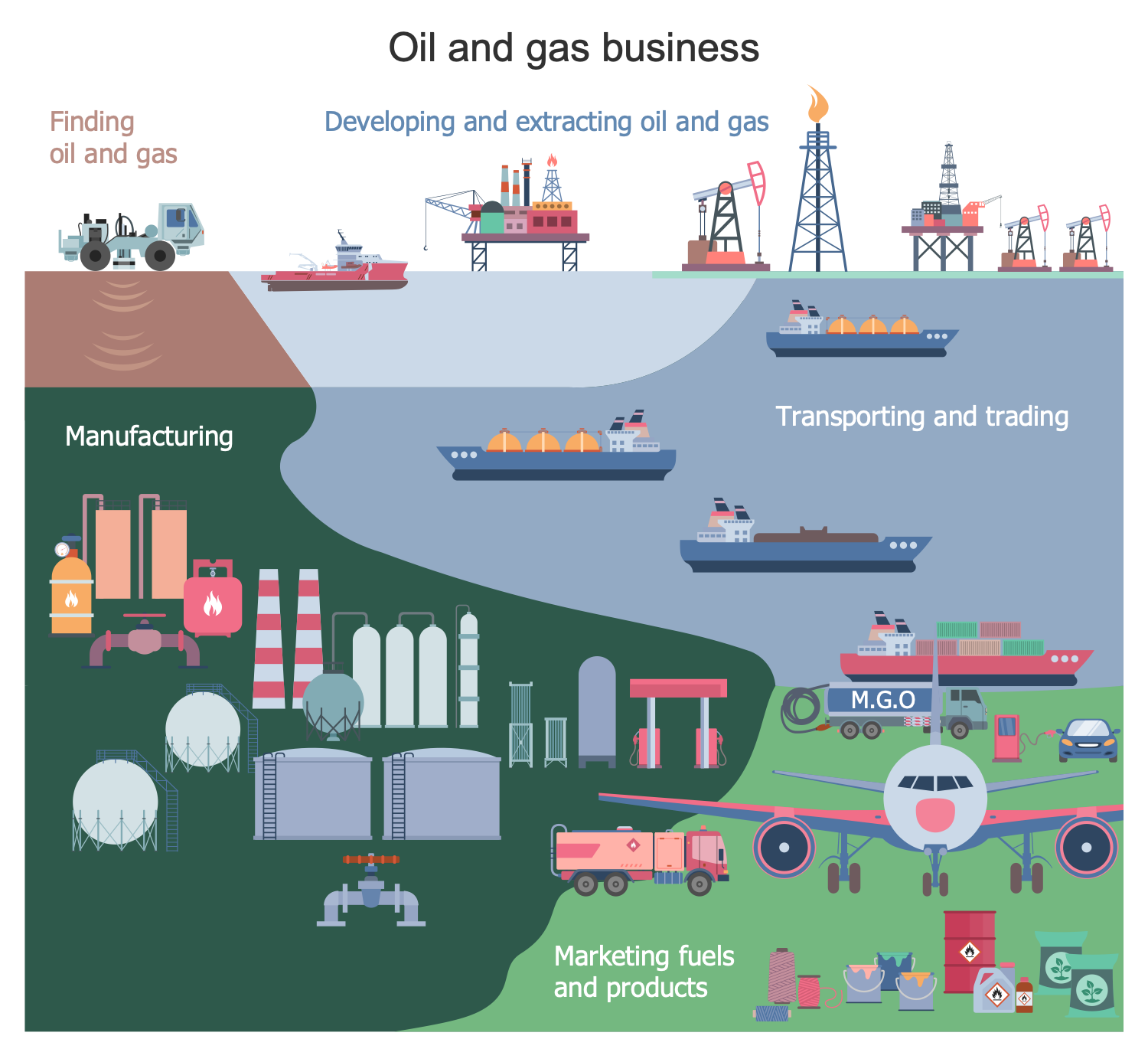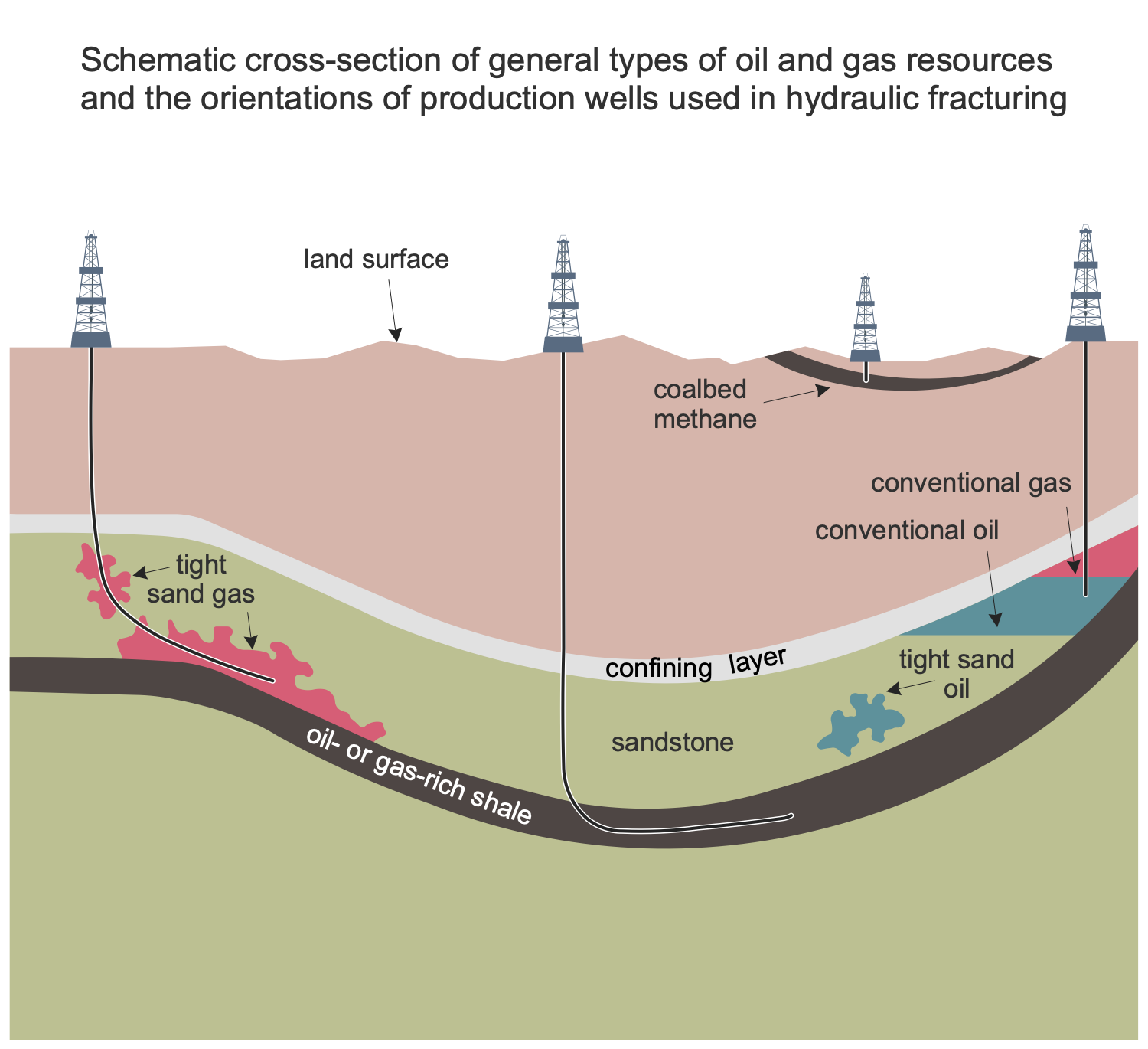Oil and Gas
Oil is a naturally occurring flammable liquid discovered in rock formations. It had been formed from the carbon-riched remains of ancient plankton and seaweeds under the exposure of heat for dozens of millions of years. As results, it consists of the complex mixtures of hydrocarbons and extra organic compounds.
The crude oil gathering, processing, and transportation is a complex process. It begins with searching petroleum reserves and exploration new oil fields. It includes activities on collecting geological, geochemical, and geophysical material. Then starts the drilling of an exploratory well and evaluation of the reservoir's potential. The next phase is production. It includes extraction of hydrocarbons, processing, and refining. The impurities are removed from the oil, byproducts and petroleum products are separated. The treated oil is then transported to processing facilities for further processing and storage. The transportation of crude oil is carried by pipelines of large diameter. The shipping by tanker ships, trucks, and rail is also applied. The refined materials are sold to end-users and other industries.
Gasoline is the most, globally-used product of crude oil. Other widely-known fuel products are diesel, jet oil, heating oil, marine fuel oil. Oil is also used in pharmaceutics, medicine and cosmetics industries, in the production of lubricants, waxes, synthetic rubber, pesticides, plastics, asphalt, etc.
Natural gas is one more important natural resource. It is a compound of gases had formed in the bowels of the Earth as a result of the anaerobic decomposition of organic substances. Natural gas is a mixture of hydrocarbons, mainly methane with admixtures of other gases.
Initially the natural gas was obtained as a by-product of oil-producing because many hydrocarbon deposits contain both oil and gas. Later it began to be mined also in isolated natural gas fields, from challenging resource types: sour gas, tight gas, shale gas, and coalbed methane. Being minded in any way, natural gas is purified of non-hydrocarbons, carbon dioxide, nitrogen, helium, ethane, propane, butane, pentane, water, etc. It is then transported via pipelines or liquefied and exported as a liquefied natural gas (LNG) by carrier ships, barges, railway tanks. Natural gas is transported only in a liquefied or compressed state. It can be also conversed into other liquid products (gasoline, diesel, jet fuel) via gas to liquids technologies (GTL). Regarding the high pressure of the natural gas, its storing is realized underground in depleted gas reservoirs, salt caverns, aquifers.

Example 1. Oil and Gas
The oil and gas industry often requires designing diagrams and illustrations of different kinds. Today, you have a perfect possibility to don’t waste valuable time and effort on drawing your illustrations and infographics when doing oil and gas business or analyzing this industry. ConceptDraw DIAGRAM including Oil and Gas solution offers a large collection of predesigned vector design objects specific to the oil and gas industry. They allow drawing precise oil and gas infographics and diagrams literally in minutes.
Example 2. Oil and Gas Wells
The samples you see on this page were created in ConceptDraw DIAGRAM software using the Oil and Gas Solution for ConceptDraw Solution Park. An experienced user spent 10-20 minutes creating each of these samples.
Use the Organizational Charts Solution for ConceptDraw DIAGRAM software to develop your own professional-looking diagrams related to the oil and gas industry quickly, simply, and effectively.
The possibility of exporting to a variety of popular graphical formats (PNG, JPEG, JPG, GIF, TIF, TIFF, BMP, DIB, EMF, SVG) and file formats like Microsoft PowerPoint (PPT), Adobe Acrobat (PDF), Microsoft Visio (VDX, VSDX), Adobe Flash (SWF), Encapsulated PostScript (EPS), HTML, opens wide opportunities for you.
